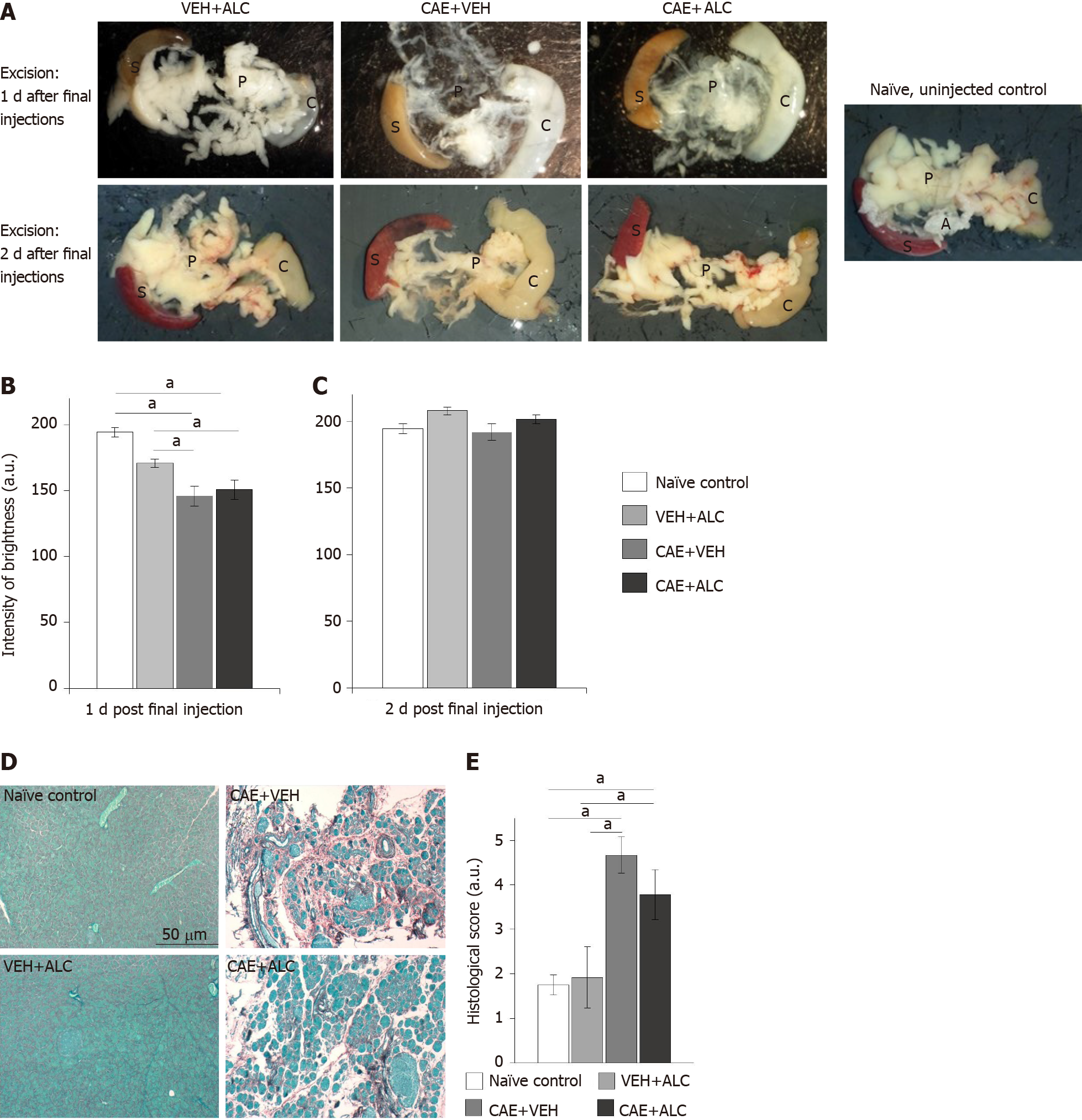Copyright
©The Author(s) 2021.
World J Gastroenterol. Mar 7, 2021; 27(9): 794-814
Published online Mar 7, 2021. doi: 10.3748/wjg.v27.i9.794
Published online Mar 7, 2021. doi: 10.3748/wjg.v27.i9.794
Figure 3 Caerulein-induced pancreatitis caused tissue translucence of the pancreas that was reversed within 2 d in the absence of pharmacological intervention as well fibrosis and acinar cell atrophy.
A: Top row shows pancreata excised at experiments end in week 6, one day after the final injections. Bottom row shows pancreata excised at experiments end two days after final injections. On the far right is an opaque pancreas from a naïve control animal that was never injected; B: Tissue from caerulein (CAE) + vehicle (VEH) and CAE + acetyl-L-carnitine (ALC) were significantly darker, revealing the charcoal stained Sylgard in the dissection dish below, shining through the translucent pancreas compared to naïve controls when excised 1 d after the last injection days in week 6. Naïve control n = 6; VEH + ALC n = 3/timepoint; CAE + VEH n = 3/timepoint; CAE + ALC n = 3/timepoint; C: No group differences were noted on day 2 post final injection day in week 6; D: Pancreatic tissue sections stained with Sirius Red and Fast Green identified wide-spread fibrosis (red) and atrophy of the acinar parenchymal tissue only in CAE + VEH and CAE + ALC samples. Scale bar 50 μm; E: Average scores (1 = no damage to 5 = severe damage) of Sirius Red and Fast Green-stained pancreatic tissue sections were significantly higher in CAE + VEH and CAE + ALC samples compared to both control groups. Naïve control n = 4; VEH + ALC n = 4; CAE + VEH n = 3; CAE + ALC n = 3; aP < 0.05; two-way ANOVA with Newman-Keuls post hoc test. A: Adiposita; C: Colon; P: Pancreas; S: Spleen; ALC: Acetyl-L-carnitine; CAE: Caerulein; VEH: Vehicle.
- Citation: McIlwrath SL, Starr ME, High AE, Saito H, Westlund KN. Effect of acetyl-L-carnitine on hypersensitivity in acute recurrent caerulein-induced pancreatitis and microglial activation along the brain’s pain circuitry. World J Gastroenterol 2021; 27(9): 794-814
- URL: https://www.wjgnet.com/1007-9327/full/v27/i9/794.htm
- DOI: https://dx.doi.org/10.3748/wjg.v27.i9.794









